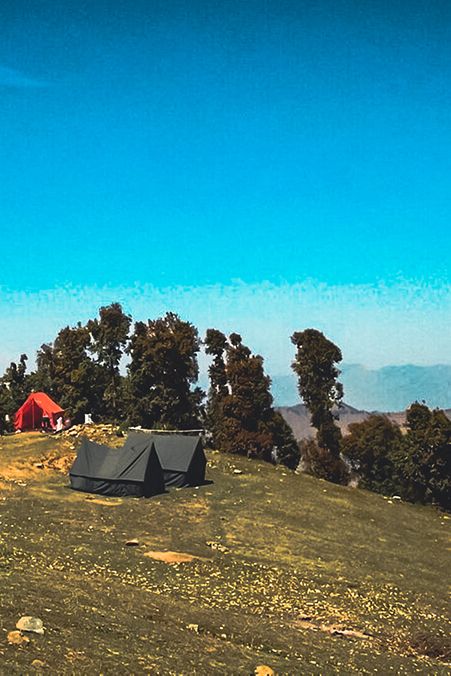The Himalayas, a majestic mountain range shrouded in mystery and enchantment, have always beckoned adventure seekers. Amidst this awe-inspiring natural wonder lies Nag Tibba, a trekker’s paradise. Nag Tibba trek, often referred to as the ‘Serpent’s Peak,’ is a fascinating journey into the heart of the Himalayas, offering a unique and captivating experience.
Introduction to Nag Tibba Trek
Nag Tibba trek, located in the Indian state of Uttarakhand, is a favorite among trekking enthusiasts. Situated at an altitude of approximately 9,915 feet, this trek is renowned for its beautiful landscapes, dense forests, and stunning panoramic views of snow-capped peaks.
The allure of Nag Tibba lies not only in its natural beauty but also in the tranquility it offers to trekkers seeking a break from the chaos of daily life.
The Beauty of the Himalayas
The Himalayas, often referred to as the ‘Abode of Snow,’ boast breathtaking scenery, encompassing towering peaks, lush green valleys, and gushing rivers. This divine mountain range, spanning across several countries, is a true marvel of nature and a sanctuary for adventure enthusiasts.
The beauty of the Himalayas is unparalleled, and each trek within this range offers a unique perspective, showcasing the diverse flora, fauna, and cultures that thrive in this region.
Unique Features of Nag Tibba Trek
Altitude and Location
Nag Tibba, at an altitude of 9,915 feet, allows trekkers to experience the thrill of high-altitude trekking without the extreme challenges of an expedition. This makes it an ideal trek for both beginners and experienced trekkers.
The trek is easily accessible from Dehradun, making it a convenient choice for adventure seekers.
Flora and Fauna
Nag Tibba trek offers a fascinating glimpse into the Himalayan ecosystem. The trail is adorned with a variety of flora, including oak, rhododendron, and deodar trees. Wildlife enthusiasts can also spot diverse fauna like the Himalayan langur and barking deer along the way.
Cultural Experiences
Apart from the natural beauty, Nag Tibba trek provides trekkers with an opportunity to interact with the local communities, such as the Garhwali people. Learning about their traditions, lifestyle, and cuisine enriches the trekking experience.
Preparing for Nag Tibba Trek
Fitness and Gear Requirements
While Nag Tibba is a moderate trek, being physically fit is essential. Regular cardio and strength exercises will prepare you for the trek. Additionally, investing in appropriate trekking gear and clothing is crucial for a comfortable journey.
Acclimatization Tips
Given the altitude, acclimatization is key to a successful trek. Arrive a day early to acclimate yourself to the surroundings and reduce the risk of altitude sickness.
Permits and Regulations
Ensure you obtain the necessary permits before embarking on the trek. Adhering to the regulations in place helps preserve the natural beauty of Nag Tibba and ensures a safe trek for all.
The Journey Begins: Nag Tibba Trek
The trek typically starts from Pantwari, a quaint village near Dehradun. The trail takes you through dense forests, clearings with mesmerizing views, and finally, to the Nag Tibba base camp.
The journey is a blend of excitement, challenge, and serenity, offering a diverse range of experiences.
Captivating Views Along the Way
Panoramic Views from Nag Tibba
Reaching the summit of Nag Tibba is a rewarding experience, offering breathtaking panoramic views of snow-capped Himalayan peaks like Swargarohini, Bandarpoonch, Kala Nag, and more. The sight of these majestic peaks against the clear blue sky is nothing short of awe-inspiring.
Other Scenic Spots During the Trek
The trail is adorned with picturesque landscapes, pristine meadows, and oak forests. Each turn presents a new and captivating view, making the trek a delightful visual treat.
The Thrill of Adventure
Nag Tibba trek is not just about the scenery; it also offers adrenaline-pumping adventure activities. Trekkers often indulge in activities like rappelling and rock climbing, adding an element of thrill to their Himalayan adventure.
Connecting with Nature and Local Culture
The trek provides ample opportunities to connect with nature, appreciating its raw beauty and the serenity it offers. Additionally, interacting with the local communities allows trekkers to gain insight into their way of life, traditions, and culture.
Camping and Accommodation Options
Camping Spots During Nag Tibba Trek
Camping amidst the Himalayas is a surreal experience. Trekkers usually set up camps at various spots during the trek, allowing them to immerse themselves in the natural surroundings and gaze at the starlit sky.
Accommodation Facilities Nearby
For those seeking a more comfortable stay, there are guesthouses and homestays available in nearby villages. These options provide a cozy and local experience.
Safety Measures and Tips
Safety Guidelines for Nag Tibba Trek
Prioritize safety during the trek. Follow your trek guide’s instructions, stay on designated trails, and avoid any risky shortcuts. Stay informed about weather conditions and act accordingly.
Essential Tips for a Safe Trekking Experience
Carry enough water, energy bars, and a basic medical kit. Dress in layers to adapt to changing temperatures and wear appropriate trekking shoes for a steady grip on the trail.
Health and Well-being During the Trek
Staying Healthy and Fit During the Trek
Maintaining good physical health and staying hydrated is crucial. Consume a balanced diet, rest well, and avoid overexertion. Listen to your body and take breaks when needed.
Dealing with Altitude-Related Challenges
Nag Tibba’s altitude may pose challenges like altitude sickness. It’s important to recognize symptoms, descend if needed, and consult a medical professional if symptoms worsen.
Preserving the Pristine Beauty
Eco-Friendly Trekking Practices
Respect nature and follow the principle of ‘leave no trace.’ Carry back all your waste and dispose of it responsibly. Avoid using plastic and harmful materials that can harm the environment.
Responsible Tourism on Nag Tibba Trek
Responsible tourism ensures that the beauty of Nag Tibba remains untouched for generations to come. Be a responsible trekker by respecting the environment, local culture, and fellow trekkers. Visit here if you are looking for Nag Tibba Trek.
Conclusion
Embarking on the Nag Tibba trek is a magical journey, a blend of natural beauty, adventure, and cultural experiences. It offers a unique opportunity to connect with the Himalayas, leaving you with memories of a lifetime.
FAQs
Is Nag Tibba trek suitable for beginners?
Yes, Nag Tibba trek is considered suitable for beginners due to its moderate difficulty level.
What is the best time to undertake the Nag Tibba trek?
The best time to visit Nag Tibba is during the months of March to June and September to November when the weather is pleasant.
Are there any altitude sickness concerns during the trek?
While Nag Tibba is not extremely high in altitude, it’s essential to acclimatize properly and be aware of altitude sickness symptoms.
Can I trek Nag Tibba independently, or should I join a group?
Both options are possible, but joining a guided trek ensures safety and a more organized experience.
Are there restroom facilities along the trek route?
Restroom facilities are limited, especially during the trek. It’s advisable to use facilities at the base camp before starting the trek.

















